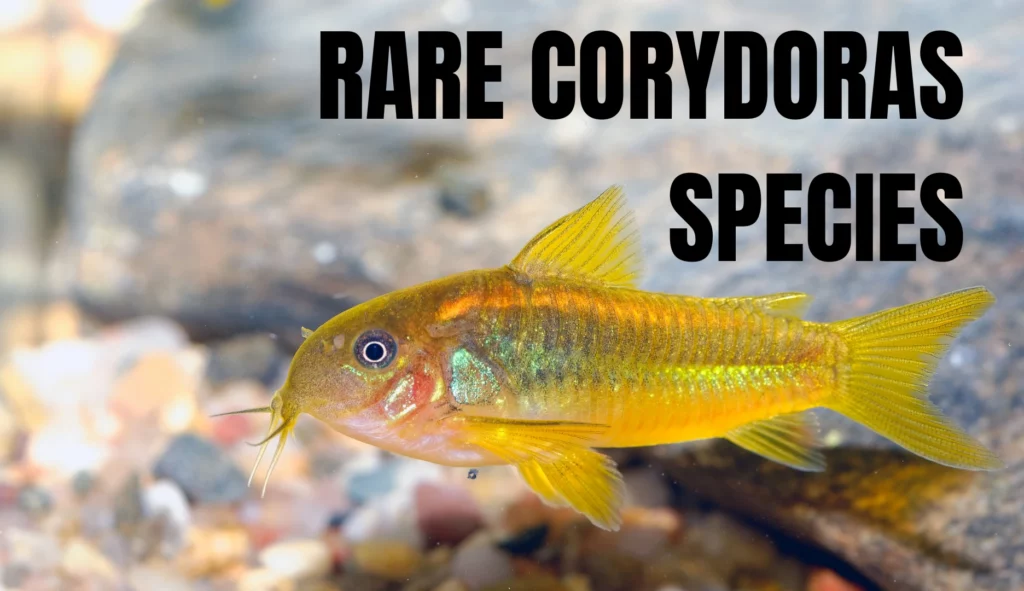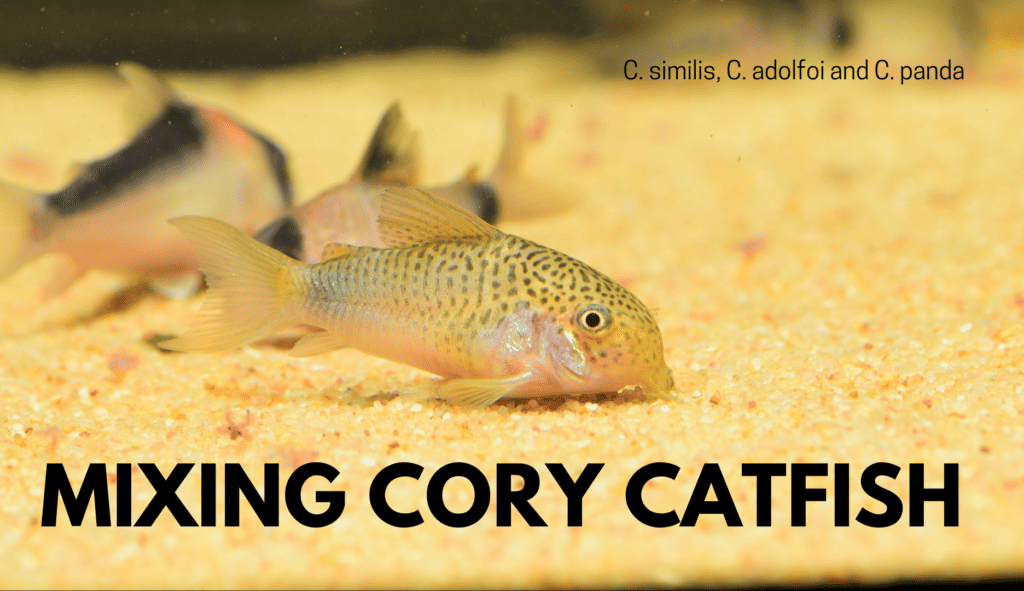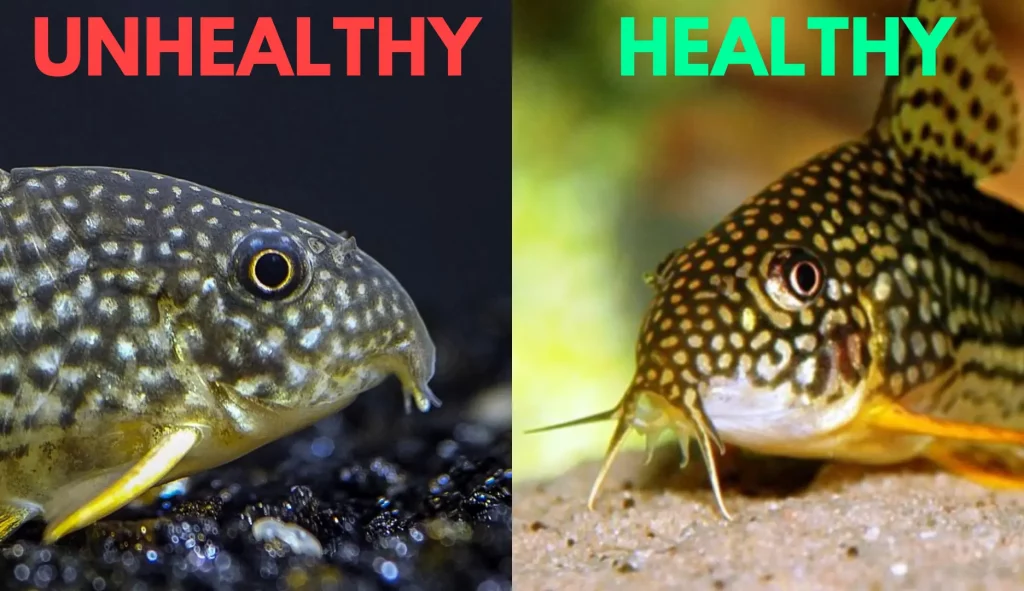Cory Catfish is one of the most popular fish in the aquarium hobby. So it’s easy to see why many people want to breed them and thus want to find out what sexes their catfish are.
Luckily, sexing Cory Catfish isn’t as hard as you might think. There are a few ways to know whether your Cory Catfish is a male or catfish, all pointed out in this article.
How to determine the sex of Cory Catfish
Sexing Cory Catfish is a fairly straightforward process. Cory Catfish are a species that shows sexual dimorphism. This means that males and females show visible differences in their appearance. But what are the differences between male and female Cory Catfish?
When fully grown, females will be bigger and fatter than females. There are also some differences in the finage between male and females. Overall, The pelvic, ventral and anal fins of females tend to be bigger and more rounded. With some species like C. elegans ssp., males may be more colorful than females.
Letting your Corydoras grow up to their full size
Before even trying to tell the sex of Cory Catfish, it’s important to wait until they have matured. Cory catfish fry / young fish can’t be sexed.
Cory Catfish are fully grown after 9-12 months. At this time, it will be way easier to see the difference between a male and a female. Only then the difference in size and fins will be visible.
On top of that, they will only be able to breed at this age. Trying to tell the sex of Corydoras apart at this age is thus not useful.
Cory Catfish are often sold when they are still young fish not yet matured. So, when you are thinking about getting Cory Catfish, especially if you want to breed them, get at least a group of 6 fish. This is necessary anyway since Cory Catfish have to be kept in groups. With six fish, you have a chance of 98,4% on at least one male/one female.
Another reason to pick up a good amount of Cory Catfish is that you have something to compare to. When you for example have four male Cory Catfish. You might think that the slightly bigger or fatter is a female. It’s only normal that even of the same sex, fish show some differences. If you have a big group, there’s a bigger chance you have at least one real female easily distinguishable to whom you can compare the other fish.
Size differences male vs. female
The most described way of telling males and females apart is telling the size difference.
On average, but highly depending on the species, males are about 0,2 inches (0,5cm) smaller than females, measured from head to tail. If you want to know more about exact Cory Catfish sizes, read How big do Cory Catfish get?.
As stated above, this is very different per species. Some species like the Bronze Cory Catfish show a significant difference, while others like Pygmy Cory Catfish or Panda Cory Catfish are harder to distinguish based on size.
The easiest way to tell the size difference between males and females is by looking from above. With females, the broadest part of the body will be around or slightly behind the ventral fins. With males, the broadest part of the body will be around or slightly behind the pectoral fins.
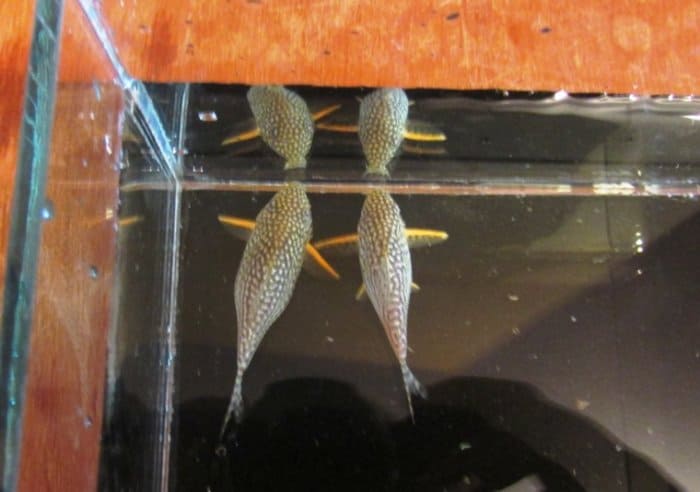
Body shape
Another commonly used way to tell males and females apart is by looking at the body shape.
As you can clearly say in the picture above, females are less streamlined and fatter than males. Especially when you look at them from above, you can clearly see the difference.
Another way to do this is by looking at the Cory Catfish from the front. You will see that the belly of males is rather flat, while females seem to rest on their be belly.
If you don’t clearly see a difference, try conditioning your Corydoras by feeding high-protein foods for two weeks. After this time, females should have become much wider.

This female is chilling on gravel (look at her barbels).
Head shape
Some species like Panda Cory Catfish show subtle but noticeable differences in the shape of their face.
The gap between the eyes, relative to the size of their head is bigger with females. Their snout is also slightly longer with a more gentle curve than that of males.
Fins
It’s often forgetten to look at the finage of Cory Catfish. Yet, it’s one of the most reliable ways because sometimes size isn’t as accurate or clear to see.
Ventral/pelvic fins
Males tend to have narrower and more pointed ventral fins than females. The ventral fins of a female fish are more fan-shaped.
This difference can vary between different species and is not present with all species.
Pectoral fins
On average, males have longer and more robust pectoral fins than females. With some species, you can clearly see the difference with the males’ fins being twice as big, while with other species may show little to no difference.
Anal fin
Males tend the have a more pointed anal fin. Females have an anal fin that’s more rounded, used to support with egg laying.
Dorsal fin
Males tend the have a more pointed anal fin. Females have an anal fin that’s more rounded. These broader and more rounded anal fins help the female stick the eggs to plants during breeding.
During breeding
This is one of the most obvious ways to check the sex of your Cory Catfish, although your Corydoras have to be spawning to see it.
When cory catfish breed, males and females will assume the so-called t position. The female will be the fish pushing the male with her snout (left fish on the photo) resulting in the shape of the letter T.
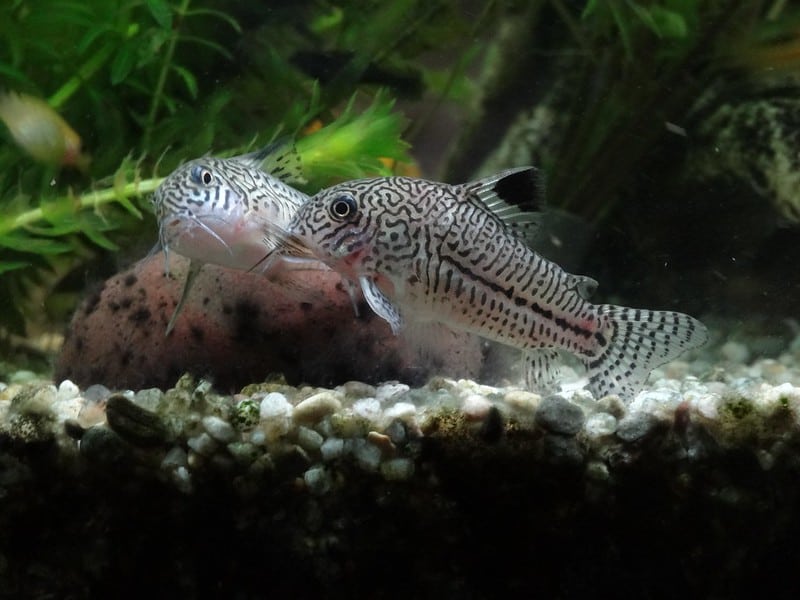
Color dimorphism
It is not common with Corydoras species, but some show differences in color, known as color dimorphism. Most species of the C. elegans group show differences in color.
Males will be more extensively colored than females, which might be confusing since the differences can be so big you could think you are looking at two different species.
Secondary dimorphism
Some species may show other differences in the form of odontodes growing on the cheeks. You might know this from pleco species like bristlenose plecos, but it isn’t common within the Coridiinae family.
Males of f.e. Scleromystax barbatus and Corydoras geoffry show this.
Conclusion: is your cory catfish male or female?
Corydoras is a genus that shows sexual dimorphism, so they show visual differences between sexes. Actually, it’s rather easy to tell male and female Cory Catfish apart from each other.
The first thing is to make sure that your Cory Catfish are full-grown and fully mature. Only after 9-12 months, the differences will be visible.
The most common way to distinguish both sexes is by looking at their size. Females will be bigger and more plumped than males. The easiest way to see this is by looking from above.
Another way is but looking at the fins of the Corydoras. Males tend to have narrower and more pointed ventrals and pectoral fins, but smaller anal fins. Sometimes the dorsal fin might be bigger than that of the female.
Some species like those of the C. elegans group may show color dimorphism. This means that there will be a difference in color pattern between female and male.
Lastly, with some species males show odontodes. This includes S. barbatus and C. geoffry.

Read everything about breeding cory catfish, from A-Z.

